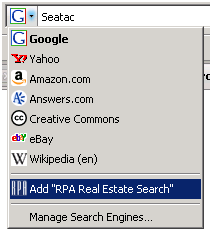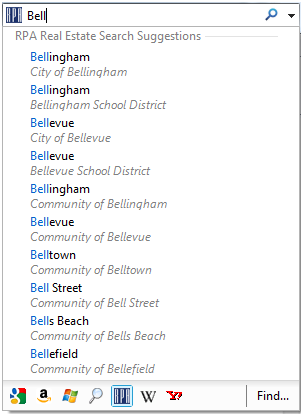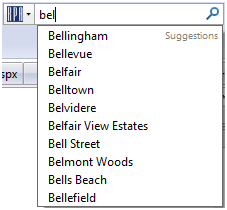On this day in…
Just a quick update on some things I’ve been doing to the RCG site. First off, I want to thank everyone for their feedback on the Facebook Connect tool.
Thanks to your feedback, I cleaned up a number of issues (like the way that the avatars showed up within comments and the way profile information was displayed on people’s new profile page. To see an example of a new profile page for Facebook members, simply click on anyone’s photo who shows up under the “Last Visitors” section.
In addition, I recently added a few Rain Drop Ads to the sidepanel of RCG, so I really want to thank both Craig Blackmon and Western Van and Storage for stepping up the plate early on. I have a few more people who are showing interest in putting up Rain Drop ads, so I expect you’ll see even more in the near future.
Also, in a recent video, I mentioned at one point that I have a foot fetish and that I’ve been looking to make the footer of RCG more interesting. Along those lines, I just moved the Similar Posts and Recent Posts sections to the footer as well as added a new section, “On this Day,” that brings back to life RCG posts from the past.
 You can see this feature below the comment section of any post on the site, including this one!
You can see this feature below the comment section of any post on the site, including this one!
It should be no surprise I have a bunch more stuff planned, but that’s all the announcments for now… As always, if there’s something you’d like to see on RCG, please just let me know!
Notes from WAMP’s Meeting on Home Valuation Code of Conduct
This morning I attended Washington Association of Mortgage Professionals (WAMB) meeting in Bellevue to learn more about the Home Valuation Code of Conduct (HVCC) which will dramatically impact conventional appraisals. It was a somber room of fellow mortgage brokers and correspondent lenders along with the panel of various representatives from the industry.
In a nutshell, mortgage originators (if paid commission) will no longer have contact with appraisers for conventional mortgages. Appraisals will be ordered via an appraisal management company–oddly similar to what Washington Mutual used before New York Attorney General Cuomo investigated. Although this is effective for loans delivered to Fannie/Freddie on May 1, 2009 or later, lenders will adopt the Code well in advance in order to be able to deliver compliant loans.
Lisa Goldsmith from Amtrust Bank discussed how they’re going to comply with HVCC beginning around April. Amtrust will treat mortgage brokers and correspondent lenders the same.
- When the loan is registered with Amtrust, they will provide an AVM (an unreliable estimation of value IMO). This is the only chance the mortgage originator has to decide whether or not they should proceed with the appraisal order.
- The order is placed with an Appraisal Management Company (AMC).
- A copy of the appraisal is sent to both the borrower and the mortgage originator.
The mortgage broker will have no idea who the appraiser is until the appraisal is delivered. Correspondent lenders may be able to order appraisals as long as they meet the HVCC (and I’m sure they’re a huge risk of buy-backs if correspondents opt for this route). In fact, mortgage originators (if paid commission) may not communicate with the appraiser.
A big issue is portability of the appraisal. If for some reason, a broker starts with a lender, like Amtrust, and then decides during the process they want to switch to another lender, Amtrust holds the appraisal. The consumer has all ready shelled out $400-$500 to one lender. It will be up to Amtrust to release the appraisal (if this is even acceptable) or another appraisal may need to be issued if the loan is switched. The power is not with the consumer and it’s not with the mortgage broker.
Quality is a huge concern as well. One mortgage originator stated that he currently has an issue with an appraisal that was provided via an AMC for a waterfront single family residence. What he received was an appraisal with 6 comparable properties–4 of them were condos! Second appraisals can be requested when it’s a question of quality–they cannot be done for “value shopping”.
It gets better…Fannie Mae amended guidelines earlier this year allowing appraisal management companies to be owned by lenders!
“The lender’s ownership of or affiliation with an appraisal management company is no longer restricted. However, any appraisal management company that provides the lender with an appraisal must adopt written policies and procedures implementing the revised Code.”
From Appraisal Press:
“In it’s current form, the HVCC discriminates against appraisers by (a) effectively requiring lenders to engage appraisers through appraisal management companies, which retain 40-50% of the fees paid by lenders, reduce competition as a result of industry consolidation, and deteriorate appraisal quality by forcing veteran appraisers from the workforce, and (b) creating an artificial preference for automated valuation models, which will result in fewer appraisals, reduced market transparency and the danger of increased in-house lender abuses. The HVCC will deprive consumers of their right to obtain independent, quality appraisals.
So let me get this straight… banks and lenders can own or have ownership interest in appraisal management companies. The AMCs (possibly owned by banks/lenders) can select which appraisers make their list AND they will reduce the appraisers incomes in an all ready challenging market. Who regulates the AMCs?
NAMB’s fighting HVCC and I don’t always support all of NAMBs views…I have to agree with them here. Once again, instead of dealing with the offenders, industries are in the process of being punished wiped out.
2008 Loan Limits to Return Soon
Part of the The American Recovery and Reinvestment Act of 2009 includes bringing back the higher 2008 loan limits to certain areas. Locally this means we may see high balance loan limits increase from $506,000 for single family dwellings in King, Snohomish and Pierce counties back to $567,500. Fannie Mae, Freddie Mac and FHA will move forward and lenders will immediately follow.
Stay tuned.
Mortgage Interest is paid “in arrears”
For Home Buyers: This means the first payment is usually a month later than you expect it to be.
For Home Sellers: This means your mortgage “payoff” is going to be higher than you expect it to be.
This is one of the small issues that often surprises people when they are buyng and selling homes. Often sellers will think the payoff is wrong, because it is higher than the principal balance on their most recent mortgage payment statement. Often buyers will be worried about paying rent and a mortgage payment for the month after their close date, and are surprised that the first mortgage payment is a month later.
Basically all “mortgage interest is paid in arrears” means is that your March 1 payment, pays February’s interest on your loan. Your April 1 payment pays your March interest.
For a buyer, if your closing is February 26th, your first mortgage payment is due on April 1st, and that will include all of the interest for the month of March. (February’s interest per day from closing to month end is paid AT closing)
For a seller, if your closing is Feburary 26th and your principal balance is $362,000 and your monthly payment is $2,800 including taxes and insurance, your payoff may be more like $363,500.
I was preparing some numbers for a client with a March close, and decided to post this for anyone having similar questions.
President Obama’s Foreclosure Rescue Plan: Loan Modification Analysis
Underwater homeowners looking for a bailout from President Obama’s Foreclosure Rescue speech might be wise to think very carefully about all the possible consequences of grabbing the new loan modification offer. The White House press release on the full plan is located here. President Obama’s plan offers homeowners in trouble a helping hand, at the expense of all the other taxpayers who didn’t speculate, but let’s put aside our outrage for now. Instead, let’s look at whether or not the loan modification program is a good decision.
Clearly everyone is in a unique situation but there are some commonalities within the group we’ll call People Seeking Loan Modifications. I am openly stereotyping for the purpose of making this blog article general instead of case study specific. People Seeking Loan Modifications (PSLM) are typically folks who had a certain level of income when they purchased the home, and today that income has been dramatically reduced. Some may be facing a rate increase or a payment recast if negative amortization has pushed the principal balance to, say 115% or 125% LTV. Most purchased at 100% LTV, some decided on interest only loans, or interest only for a set period of time, in order to achieve a lower payment, speculating that future appreciation would bail them out at the next refi. They have two big problems: Negative equity AND an unaffordable payment. PSLM typically have other consumer debt as well as mortgage debt. When income drops off a cliff, PSLM use credit cards to pay for routine expenses. By only offering a modest rate reduction, I predict that the re-default rate on these new loan modifications will be easily over 50% and I’m being optimistic. A rate reduction only solves half the problem. Their monthly housing expense has been reduced but their other expenses have not gone away. (If When the banks are nationalized it will be a lot easier to offer rate reductions on credit cards and perhaps that will be in the next bailout proposal.) There IS a solution for the typical loan mod seeking homeowner; President Obama wants principal balance cram downs in bankruptcy. Now the homeowner has to make a sacrifice: Trash my credit record for 10 years with a BK in exchange for getting a financial matrix reboot.
The key to whether or not a loan modification under the new program will work rests with the homeowner: What is the homeowner’s income today v. when he/she obtained the mortgage loan? Many of these folks have been laid off, some were living on extended overtime as a regular part of their monthly income, others were commissioned salesmen with flatline commissions during 2008, some had to take mandatory salary reductions, and still others have had NO disruptions in income but were qualified at the teaser rate of an Option ARM. What if the homeowner has no job at all? Does the homeowner get a zero percent interest rate loan? I’m thinking no, so how do we underwrite this loan and make a determination if this loan mod will fail? PSLM are high risk borrowers and re-defaults will likely occur. But the theory goes that if we can slow the foreclosures to the pace of a river instead of a flood, then doing so *might* help stabilize neighborhood home values and prevent even more foreclosures.
The Tim at SB reminds us to consider that when speculation occurs, foreclosures are a natural part of the solution and may not always be a negative, especially when a homeowner is far better off renting a similar home for far less than the (even modified!) mortgage payment. Home values fall and people who can afford to purchase do so. This begs the question: Do modified mortgage payments really help homeowners? The answer is, it depends on the homeowner.
In order to project future performance, it is important to visit past efforts in helping homeowners face foreclosure. Past performance: FHA Secure: Projected to help 80,000 Actually helped 266. Hope for Homeowners: Projected to help 400,000 actually helped 312. Projections for President Obama’s loan modification program are that it may help 3 to 4 million homeowners. I project it will help far less. Perhaps we’ll break a thousand this time. This new plan appears to be a bailout for the banks, disguised as a bailout for homeowners. Same siren as FHA secure and H4H, she’s just wearing a different dress.
Will this piece of the Foreclosure Rescue package from the President help stabilize falling values? No. Instead, it will just flatten out the cliff diving and extend the pain that much longer. From CR:
“For homeowners there are two key paragraphs: first the lender is responsible for bringing the mortgage payment (sounds like P&I) down to 38% of the borrowers monthly gross income. Then the lender and the government will share the burden of bringing the payment down to 31% of the monthly income. Also the homeowner will receive a $1,000 principal reduction each year for five years if they make their payments on time. This is not so good. The Obama administration doesn’t understand that there were two types of speculators during the housing bubble: flippers (they are excluded), and buyers who used excessive leverage hoping for further price appreciation. Back in April 2005 I wrote: “Housing: Speculation is the Key [S]omething akin to speculation is more widespread – homeowners using substantial leverage with escalating financing such as ARMs or interest only loans.” This plan rewards those homebuyers who speculated with excessive leverage. I think this is a mistake.
Another problem with Part 2 is that this lowers the interest rate for borrowers far underwater, but other than the $1,000 per year principal reduction and normal amortization, there is no reduction in the principal. This probably leaves the homeowner far underwater (owing more than their home is worth). When these homeowners eventually try to sell, they will probably still face foreclosure – prolonging the housing slump. These are really not homeowners, they are debtowners / renters.
$8,000 Homebuyer Tax Credit
Looks like the $8,000 Home Buyer Tax Credit is now signed, sealed and delivered.
Update: Everything you wanted to know about the 2009 home purchase $8,000 credit. (There is a similar link below for the 2008 $7,500 loan/credit)
Zillow reports it is a FULL $8,000 credit, even if the buyers total tax liability is less than that amount. “Buyers may not have owned a home for the past three years to qualify.”
CNN Reports That you can get your $8,000 faster by claiming it on your 2008 Return (or amended return if you have already filed), even though to qualify for this $8,000 non-refundable credit, you have to buy a house between 1/1/2009 and 11/30/2009
There is an income limit of $75,000 for single people and $150,000 for couples, though there are reports that people making over the limit might be able to get a partial credit.
If anyone has any details on the partial credit for people earning over the limits, please do let us know. Update: This answer is in the link at the top of this post.
For people who bought between 4/9/08 and 12/31/08
I don’t see any news so far that there are any changes for people who bought in 2008.
OpenSearch is beyond cool – it’s the new cold
I was reading Redfin’s Developer Blog and the IE blog a few months ago and I got this desire to write my own OpenSearch provider. OpenSearch was originally created by A9.com (an Amazon.com company) and was primarily designed as a way for web developers to publish search results in a standard and accessible format. This turns out to be a good idea because different types of content require different types of search engines. The best search engine for a particular type of content is frequently the search engine written by the people that know the content the best. Google is great at searching unstructured content on the internet, but when it comes to structured search on a single web site there are much better options (Endeca, FAST, Autonomy, Solr, my favorite SQL database, etc). The other benefit of OpenSearch providers is that it shifts the balance of power away from Google and back toward web browser vendors & web site developers.
Both of the major web browsers support the OpenSearch Referrer extension. IE 7+, Firefox 2+ & Chrome allows you to add search engines to your browser without leaving the web page. The best place to get started is from the browsers vendors themselves. You can add search providers from Microsoft’s site or you can add search providers from Firefox’s add-ons site. In the interest of full disclosure, Opera allows you to add search engines manually, and Safari currently does not support this feature in any form (unless you count using vi to edit the Safari executable or changing your OS’s hosts file as support, which I do not recommend).
Anyway, our developer friends at Redfin wrote a blog post about their OpenSearch provider on their dev blog some time ago. Of course, they took the easy way out by not developing an OpenSearch Suggestions extension (slackers). I decided that a search provider without suggestion support is lame, so I took a stab at creating one. I think what inspired me to write an OpenSearch suggestions provider is that the IE 8 team blogged about their new Visual Search feature (which embraces & extends the OpenSearch suggestions work that Firefox pioneered) and I could leverage the work to improve the search experience for both IE 8 & Firefox 2+ users. (And the satisfaction of having a cool feature that Redfin & Estately haven’t implemented yet was probably another factor).
This functionality is typically exposed to users, via the search engine bar, next to the address bar in your web browser. So in your page markup, you’ll add something like this that tells the browser that your web site has a search service.
<link title="RPA Real Estate Search" type="application/opensearchdescription+xml" rel="search" href="http://www.seattlehouses.com/Feeds/OpenSearch.ashx"/>
The above element points to your site OpenSearch Description XML file which describes your search service in a way the browser can understand. When you visit RPA’s site, the browser will read RPA’s OpenSearch Description file located here and unobtrusively let you add the site’s search providers.
Assuming everything is working correctly, the user should be able to visit RPA’s web site, click on the browser’s search bar to add our search provider like so… (IE’s screen captures are on the left, Firefox’s are on the right).
 |

|
I’ve also added a button in RPA’s search bar (see above right) in case site visitors don’t discover our search provider via the browser (I suspect most users would miss it otherwise).
After you’ve registered RPA’s search provider with your web browser, you can select it and just start typing. Since I’ve implemented a suggestions service, it will auto complete cities, school districts & neighborhoods as you type them (Didn’t I say this was cool?). I should note that although IE 7 & Chrome support OpenSearch, only IE 8 and Firefox currently support the suggestions providers. Anyway, if you wanted to look for listings in Bellevue, here’s what it currently looks like.
 |
 |
As you’ll notice, IE 8 & Firefox 3 displays suggestions differently on RPA’s site. This is intentional because IE 8 supports a newer version of the OpenSearch standards (Microsoft calls it Visual Search) and I designed RPA’s search provider to exploit this fact. In Firefox, the browser can only handle plain text suggestions, which can lead to ambiguous searches. For example, let’s say you search for Riverview. Riverview is both a neighborhood in Kent and a school district in Carnation / Duvall, so in Firefox there is no means for the user to tell the web site in which context they meant to search for when they typed in Riverview. I suppose one could create a “Did you mean” results page for cases like this, but I think that somewhat defeats the purpose of having suggestions support.
However, in IE 8, if a term has multiple contexts, the search provider can display them all and the user can select the one they meant. Also in IE 8, the search provider can display thumbnails next to the suggestions, which further helps the user quickly find what they are looking for. Although, I haven’t implemented that feature yet (mostly because I wasn’t sure what picture I should put up there for search terms that return multiple results), other web sites have. For example, if you wanted to buy a movie from Amazon or learn more about our 16th president from Wikipedia, the IE 8 search provider experience looks like this…
  |
As the Redfin developers stated, implementing OpenSearch Referrer extensions are surprisingly easy (so I think users will soon request them from all web sites once the word gets out). The OpenSearch Suggestions extensions are more difficult to implement because every single keystroke is essentially a REST web service call. If you aren’t careful, you could bring your web server to its knees real quick. However, given all the AJAX map based tricks today’s real estate web sites perform, this isn’t anything that a professional software engineer can’t handle.
 Call me crazy, but I think OpenSearch providers are going to become bigger than RSS feeds over the next year. If IE 8’s forth coming release doesn’t launch them into the mainstream, I think future releases of Firefox & Chrome will improve upon IE 8’s good ideas. Maybe you should think of it as browser favorites on steroids? If search is sticky, then OpenSearch is superglue and duct tape. If Firefox’s suggestions support were the tip of the iceberg, then IE 8’s implementation is cooler than Barrow, Alaska. The future of OpenSearch looks bright, even if it’s cold outside.
Call me crazy, but I think OpenSearch providers are going to become bigger than RSS feeds over the next year. If IE 8’s forth coming release doesn’t launch them into the mainstream, I think future releases of Firefox & Chrome will improve upon IE 8’s good ideas. Maybe you should think of it as browser favorites on steroids? If search is sticky, then OpenSearch is superglue and duct tape. If Firefox’s suggestions support were the tip of the iceberg, then IE 8’s implementation is cooler than Barrow, Alaska. The future of OpenSearch looks bright, even if it’s cold outside.
Trading Houses instead of “cramdown”
Sometimes a solution that seems obvious to me, is not talked about at all. So I’d like to throw this out there for what it’s worth. Let’s say a lender approved someone for a $650,000 loan back in 2006, BUT using sound ratios and current mortgage rates, they really only qualify at $500,000.
Instead of the taxpayers paying $150,000 to “cramdown” the mortgage to $500,000 to help them stay in a house they shouldnt have bought in the first place, why not do a “do over”? Have the lender give them the $500,000 mortgage they should have given them in the first place, but on a different house? Add a requirement that they most move to and buy a house of someone else who got in over their head. Seems simple to me. Just go back and do it correctly.
Have the people move to a house at today’s reduced prices, that they actually qualify to live in. Then sell the more expensive house OR play “musical houses” by moving someone who should have had a loan of $650,000 into their house. Move everyone around into pre-foreclsoure houses at the prices they can actually afford. Then only sell the ones left at the end.
There’s a lot of talk about “the house of cards”…well let’s reshuffle the deck and deal again. Move people to the house they should have bought in the first place, instead of having bunches of vacant bank owned properties. Better than the taxpayer helping them live in a house they couldn’t afford in the first place.
Wouldn’t work for everyone. But this solution added to loan mods and some other solutions, just might work in areas over-run with foreclosures and bank owned properpties.
PMI Mortgage Insurance Company drop kicks Mortgage Brokers
Today I had several Mortgage Professionals contact me regarding PMI Private Mortgage Insurance Company cutting off mortgage brokers via email and comments here. I thought it must be a rumor…but it’s not, effective February 20, 2009 PMI Mortgage Insurance Company will no longer underwrite or insure loans for mortgage brokers. However if you’re a lender, PMI is ‘Right alongside you…we’re in it for the long run”.
From an email I received today from a Loan Originator:
It’s believed that PMI is the first of the nation’s seven MI firms to totally exclude loan brokers from their coverage menus. In recent months other MIs – including Genworth and MGIC – have tightened guidelines on broker-sourced loans, particularly condominiums and high LTV notes. A PMI spokesman confirmed the new policy change to National Mortgage News adding that, “This does not apply to correspondents.
